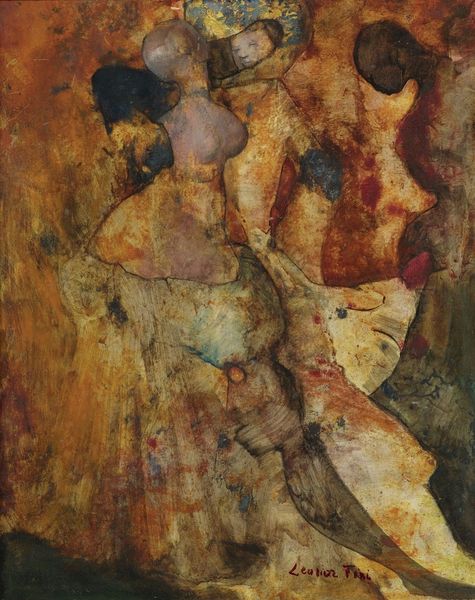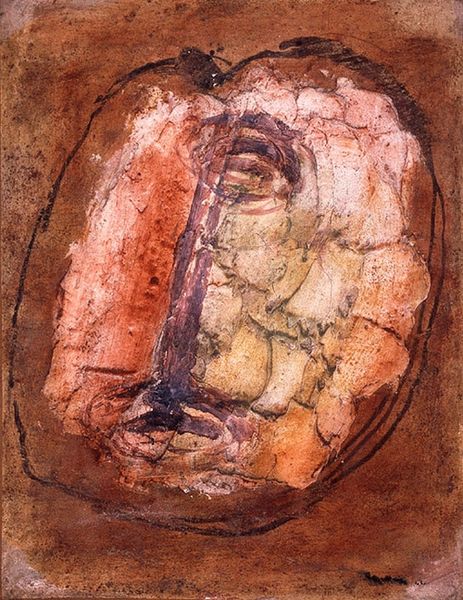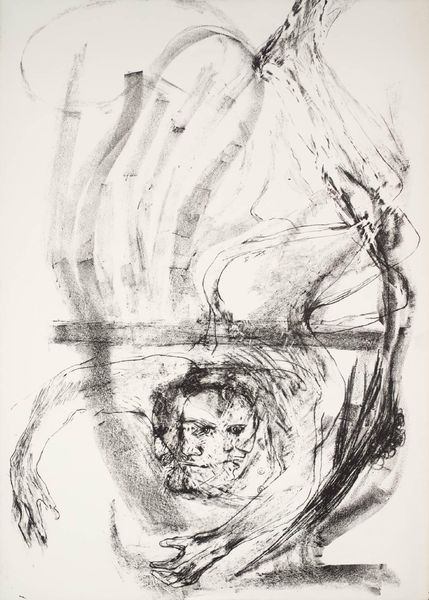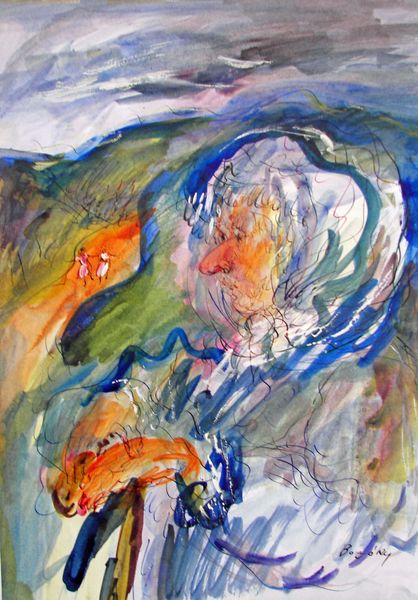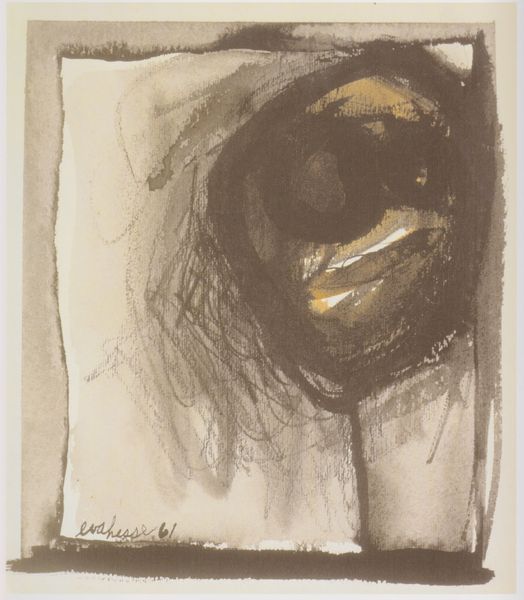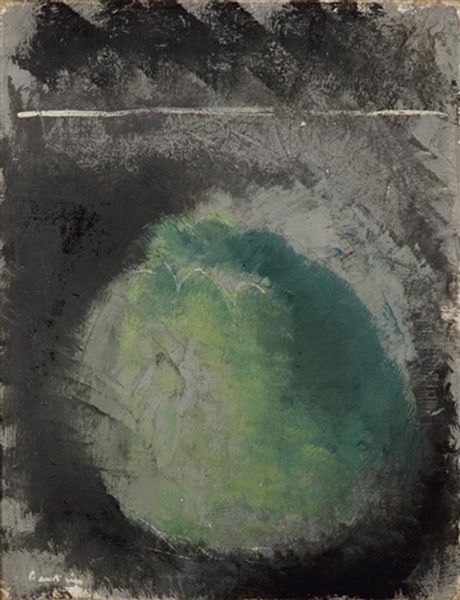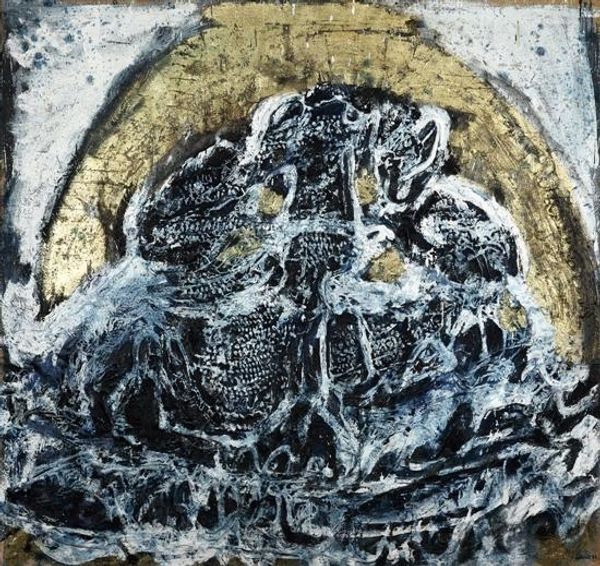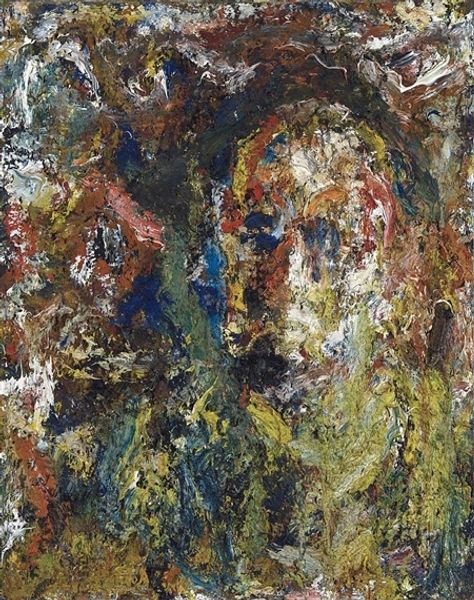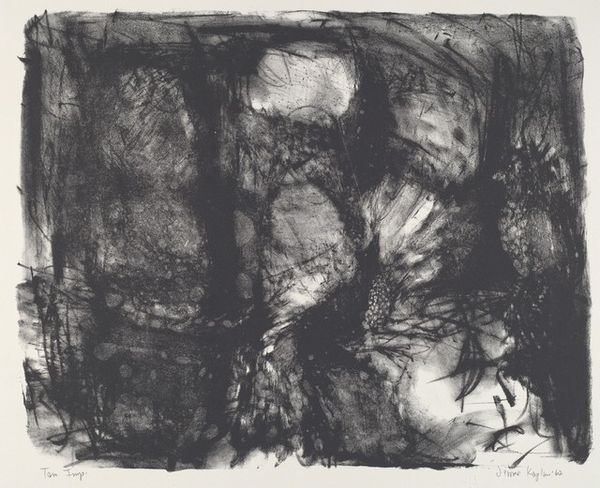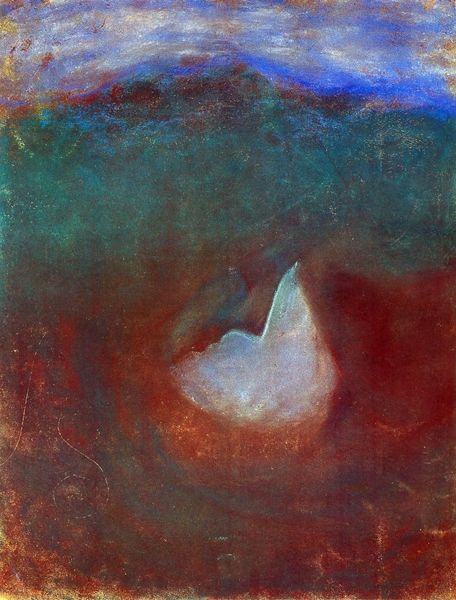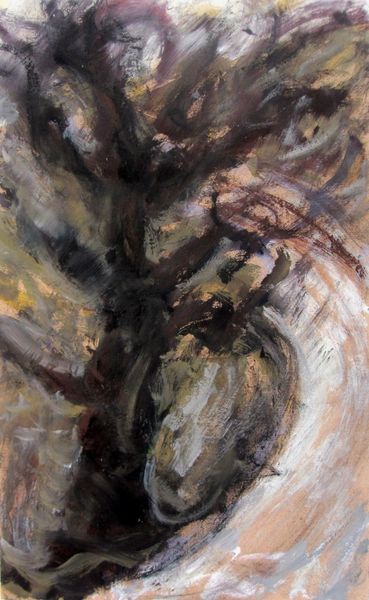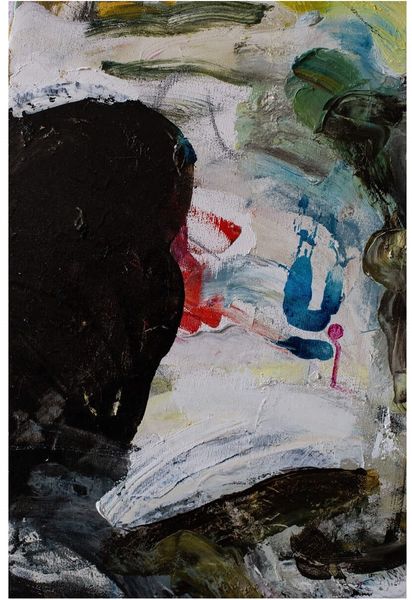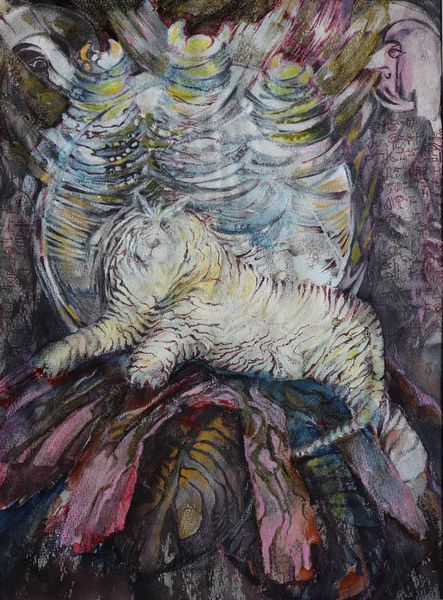
Dimensions: 64 x 54 cm
Copyright: Jean Fautrier,Fair Use
Editor: Jean Fautrier's *Tête d'otage*, painted in 1944. What strikes me immediately is the texture, like the paint itself is a kind of wounded flesh. It's…disturbing. What do you make of it? Curator: Disturbing is spot on. It *is* wounded flesh, isn't it? I mean, Fautrier lived through the Occupation in Paris, witnessed horrific brutality. For me, this isn't just a portrait, it's a scream. An anguished cry rendered in thick impasto, in earth tones that evoke decay. I feel the suffocating fear and the weight of despair. Do you get a sense of that suffocating atmosphere? Editor: Definitely the weight, the heavy, almost brutal application of paint contributes to it, yes. Is that why it's considered abstract expressionism? Because of that raw emotional intensity? Curator: Partly, sure. But it goes deeper than just expression. The abstraction here *is* the message. It resists easy reading, reflecting the unrepresentable nature of trauma. How can you depict something that defies comprehension? You hint at it, you suggest… you wound the surface. Fautrier transformed the paint into the message itself. It's matter painting. It's post-impressionist, a new language to reflect unprecedented times. Editor: So the texture, the colours, the abstraction, are all deliberate choices amplifying the emotional impact. I initially thought of it simply as an abstract portrait, but the historical context truly changes how I perceive it. Curator: Exactly! It becomes an echo of unspeakable horror. Art gives us language when there is none. And sometimes, a scream is all you need to understand. Editor: Absolutely. A very visceral scream indeed.
Comments
No comments
Be the first to comment and join the conversation on the ultimate creative platform.
